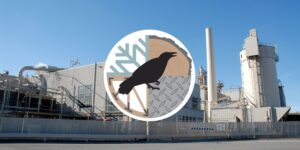Automated industrial machinery has played a pivotal role in the evolution of the manufacturing and industrial sector, boosting production, quality, and efficiency. Automation technology has redefined how industrial operations are managed, moving from manual processes to smart, interconnected systems. Manufacturers are benefiting from faster, more accurate, and more reliable machinery with various control solutions such…
Read MoreMachine automation has revolutionized industrial operations, driving efficiency, improving safety, and enhancing product quality across sectors. By automating repetitive tasks and optimizing complex processes, businesses are better equipped to meet the growing demands of modern manufacturing. At Crow Engineering, we specialize in designing and implementing advanced machine automation solutions customized for various industries such as…
Read MoreWhat is a Process Engineer? A process engineer is responsible for designing, implementing, and optimizing industrial processes. These engineers ensure that production lines operate efficiently, safely, and sustainably. They work across various industries, including manufacturing, chemicals, food processing, and more, applying their expertise to improve production quality, reduce waste, and optimize energy usage. In essence,…
Read MorePowered by AI, intelligent agents continuously monitor and optimize industrial processes. These autonomous systems analyze real-time data to predict machine behavior, adapt to changing conditions, and provide operators with valuable insights, all while ensuring smooth operation. Learn More About Intelligent Agents
Read MoreRenewable energy projects have become essential in the global effort to reduce carbon emissions and transition to sustainable energy sources. Estimating the cost of capital for these projects is a critical step in ensuring their financial viability and attractiveness to investors. This blog will explore the key factors involved in estimating the cost of capital…
Read MoreA capital improvement plan (CIP) is a strategic framework that details long-term investments in physical infrastructure and facilities to support the growth, maintenance, and enhancement of a business or organization. It acts as an essential tool for planning and managing capital projects over an extended period, ensuring that resources are allocated efficiently and effectively to…
Read MoreThere’s a clear hierarchy: safety, environment, quality, production. Focusing on safety enhances all other aspects. If you eliminate safety risks, you improve quality and productivity. By using AI through the lens of safety, we can enhance every dimension of the operational process. Safety improvements naturally lead to better quality and increased productivity. It’s a chain…
Read MoreCrow Engineering’s team offers custom equipment configurations, integration, automation, optimization, and installation support. Different equipment configuration options are provided in our initial feasibility studies to meet your project’s goals. Read More
Read MoreFacility performance evaluations (FPEs) are critical tools for ensuring that buildings operate efficiently, safely, and sustainably. These evaluations provide a comprehensive analysis of a facility’s performance, identifying areas for improvement that can lead to significant benefits in terms of cost savings, regulatory compliance, and user satisfaction. Conducting regular facility performance evaluations contributes to better facility…
Read More








